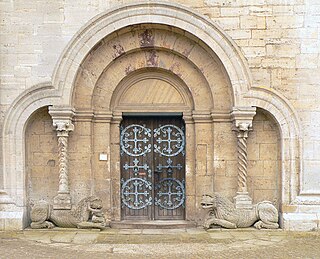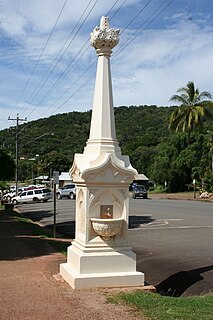 W
WStonemasonry or stonecraft is the creation of buildings, structures, and sculpture using stone as the primary material. It is one of the oldest activities and professions in human history. Many of the long-lasting, ancient shelters, temples, monuments, artifacts, fortifications, roads, bridges, and entire cities were built of stone. Famous works of stonemasonry include the Egyptian pyramids, the Taj Mahal, Cusco's Incan Wall, Easter Island's statues, Angkor Wat, Borobudur, Tihuanaco, Tenochtitlan, Persepolis, the Parthenon, Stonehenge, the Great Wall of China, Chartres Cathedral.
 W
WThe Arte dei Maestri di Pietra e Legname was one of the Guilds of Florence that represented the Master stonemasons, woodcarvers, and sculptors. It was founded before 1236, and it came to absorb multiple building crafts in the Florence area. It was one of the five Arti Mediani ("middle trades")
 W
WJohn Barr was a New Zealand politician representing labour interests. A stonemason by trade, he was involved in many organisations, was a community leader in Redcliffs and became Mayor of Sumner. The establishment of Redcliffs School is credited to him. He was a Member of the Legislative Council for 23 years, where he held the role of Chairman of Committees for the years before his death.
 W
WColm de Bhailís was an Irish poet, songwriter, stonemason and centenarian who lived to be 109 years of age.
 W
WJean de Chelles was a master mason and sculptor who was one of the architects at the Cathedral of Notre-Dame de Paris. On the exterior wall of the south transept a stone plaque is signed Johanne Magistro and dated February 1257, documenting the initiation of alterations to the transept and its portal. On his death in 1265 he was succeeded by Master Pierre de Montreuil.
 W
WThe Comacine masters were early medieval Lombard stonemasons working in a region of excellent building stone who gave to Lombardy its preeminence in the stone architecture that preceded Romanesque style.
 W
WDry stone, sometimes called drystack or, in Scotland, drystane, is a building method by which structures are constructed from stones without any mortar to bind them together. Dry stone structures are stable because of their construction method, which is characterized by the presence of a load-bearing façade of carefully selected interlocking stones.
 W
WErnest Greenway (1861–1934) was a stonemason in Ipswich, Queensland, Australia. His work is part of many heritage-listed sites in Queensland.
 W
WStefan Kaiser is a German sculptor.
 W
WErwin Hermann Lambert was a perpetrator of the Holocaust. In profession, he was a master mason, building trades foreman, Nazi Party member and member of the Schutzstaffel with the rank of SS-Unterscharführer (corporal). He supervised construction of the gas chambers for the Action T4 euthanasia program at Hartheim, Sonnenstein, Bernburg and Hadamar, and then at Sobibór and Treblinka extermination camps during Operation Reinhard. He specialized in building larger gas chambers that killed more people than previous efforts in the extermination program.
 W
WAbraham César Lamoureux was a French sculptor and stonemason who worked in Sweden and in Copenhagen, Denmark. He is best known for creating the first equestrian statue in northern Europe.
 W
WAristeidis Metallinos (Greek: Αριστείδης Μεταλληνός; was a Greek sculptor.
 W
WLuka Mislej was a Carniolan stonemason and sculptor.
 W
WEdward Williams, better known by his bardic name Iolo Morganwg, was an influential Welsh antiquarian, poet, and collector. He had been seen as a leading collector of Medieval Welsh literature and expert on it, but it emerged after his death that he had forged several manuscripts, notably parts of the Third Series of Welsh Triads. Even so, he had a lasting impact on Welsh culture, notably in founding the Gorsedd. The philosophy he spread in his forgeries had a big impact on early neo-druidism. His bardic name is Welsh for "Iolo of Glamorgan".
 W
WReeves was the most prominent firm of monumental masons in Bath, Somerset. They flourished from c. 1778 to the 1860s. They often signed their work with "Reeves," or occasionally "Reeves & Son of Bath" when commissioned outside of Bath. One memorial is in the Grade I-listed City of London church St. Magnus the Martyr.
 W
WMaster James of Saint George ,(French Maitre Jacques de Saint-Georges),(Old French Mestre Jaks),(Latin Magistro Jacobo de Sancto Georgio), was a master of works/architect from Savoy, described by historian Marc Morris as "one of the greatest architects of the European Middle Ages". He was largely responsible for designing King Edward I's castles in North Wales, including Conwy, Harlech and Caernarfon and Beaumaris on Anglesey.
 W
WWilliam of Sens or Guillaume de Sens was a 12th-century French master mason and architect, believed to have been born at Sens, France. He is known for rebuilding the choir of Canterbury Cathedral between 1174 and 1177, counted first important example of the Early Gothic Style of architecture in England, finished in 1184. Before Canterbury, he worked on Sens Cathedral. According to one English source, he died at Canterbury on 11 August 1180. According to other sources, he died in France, after returning from England.
 W
WA slater, or slate mason, is a tradesperson who covers buildings with slate.
 W
WJohan(n) Gustav Stockenberg was a Swedish sculptor, wood carver and stonemason who worked in Sweden, Russia and mainly in Reval.
 W
WRalph Symons was an English mason and architect known for his work at the University of Cambridge in the reign of Elizabeth I.